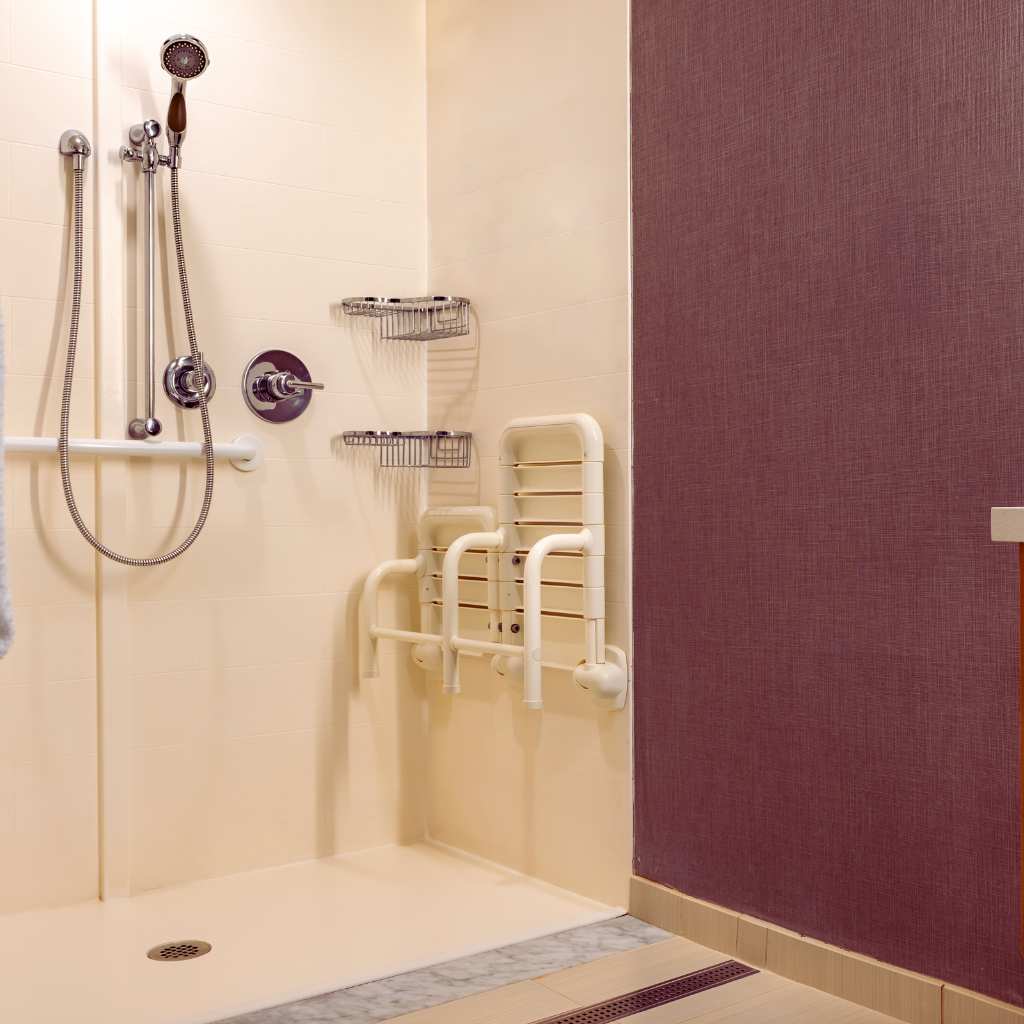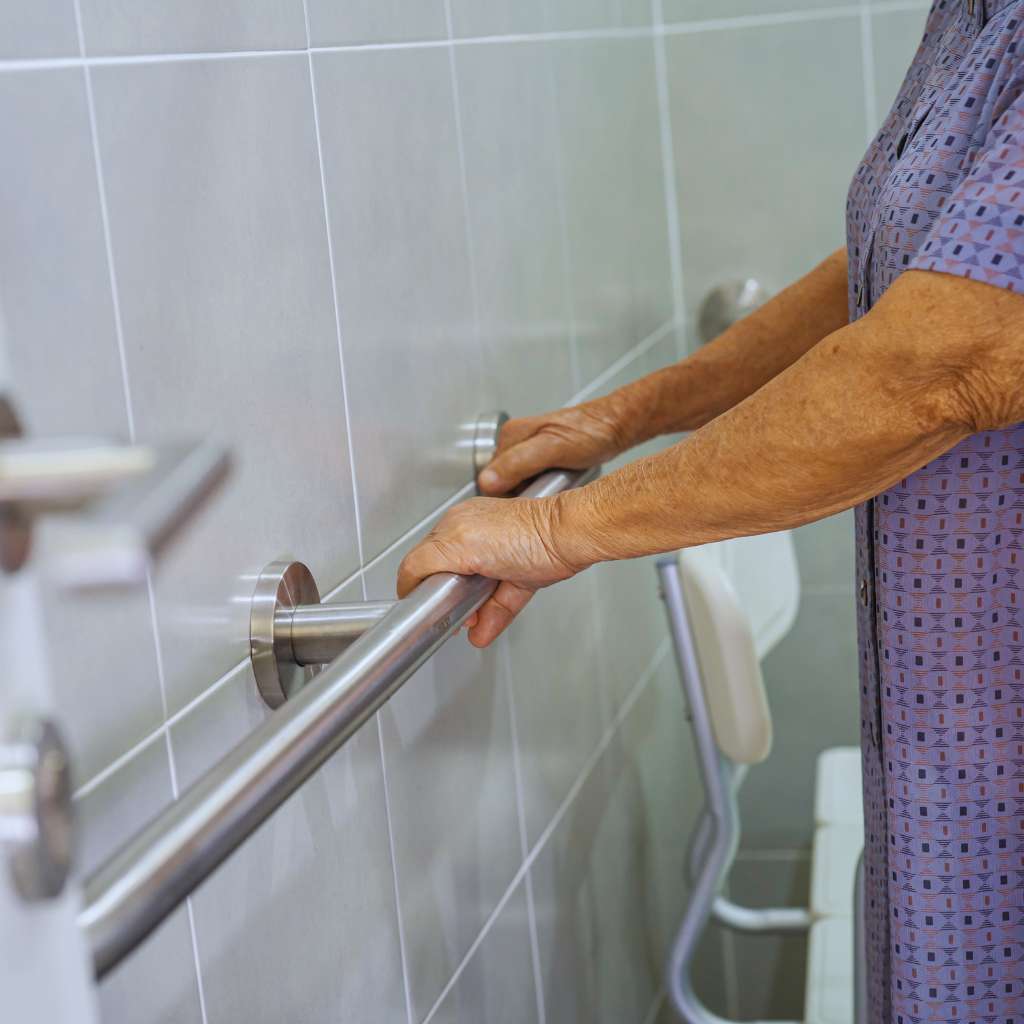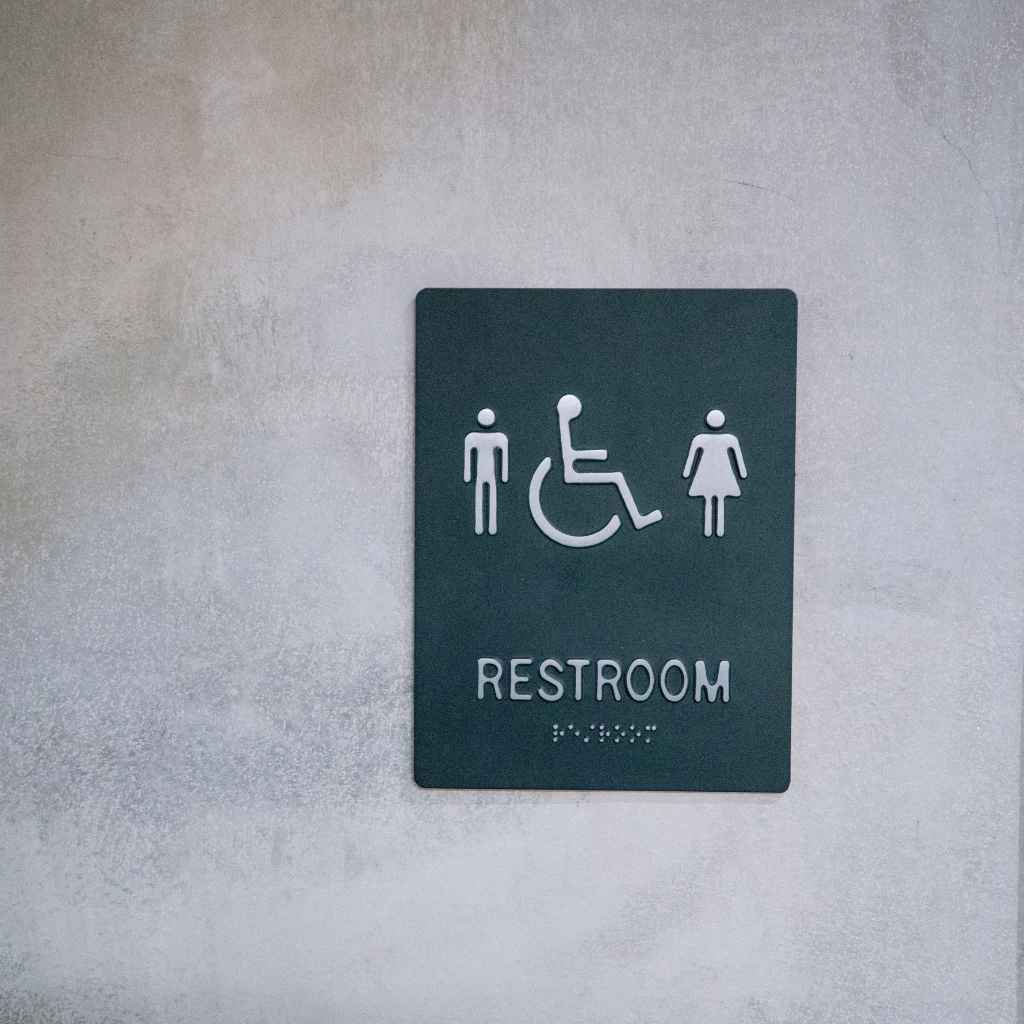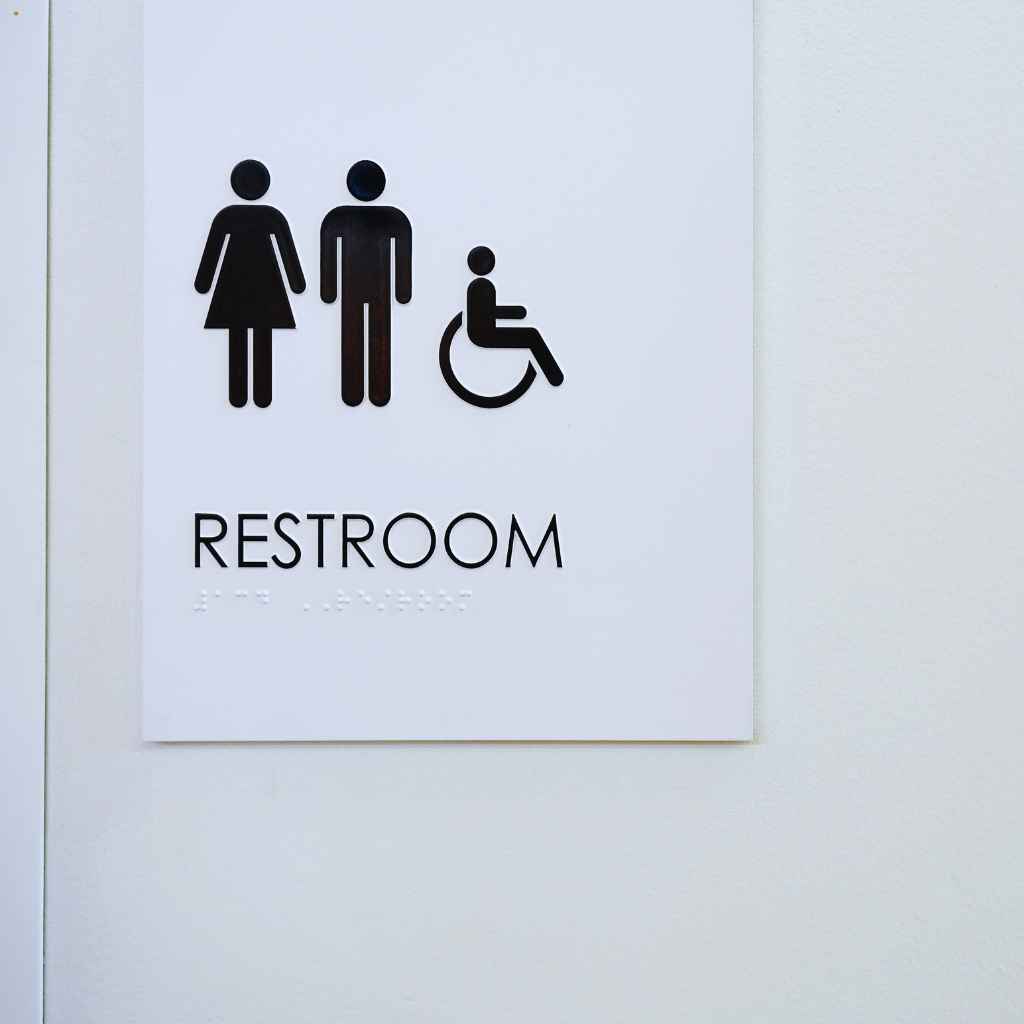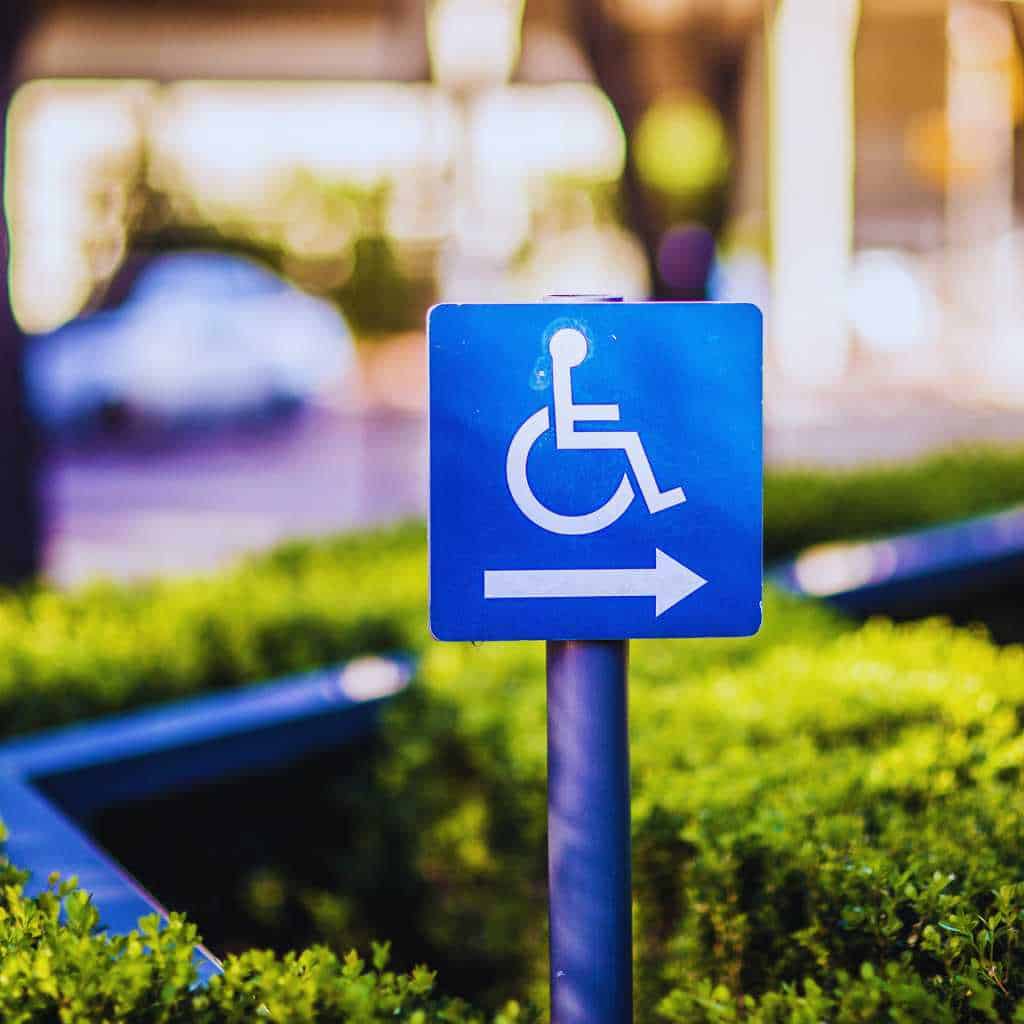California ADA Residential Bathroom Rules (Must Know Guide)
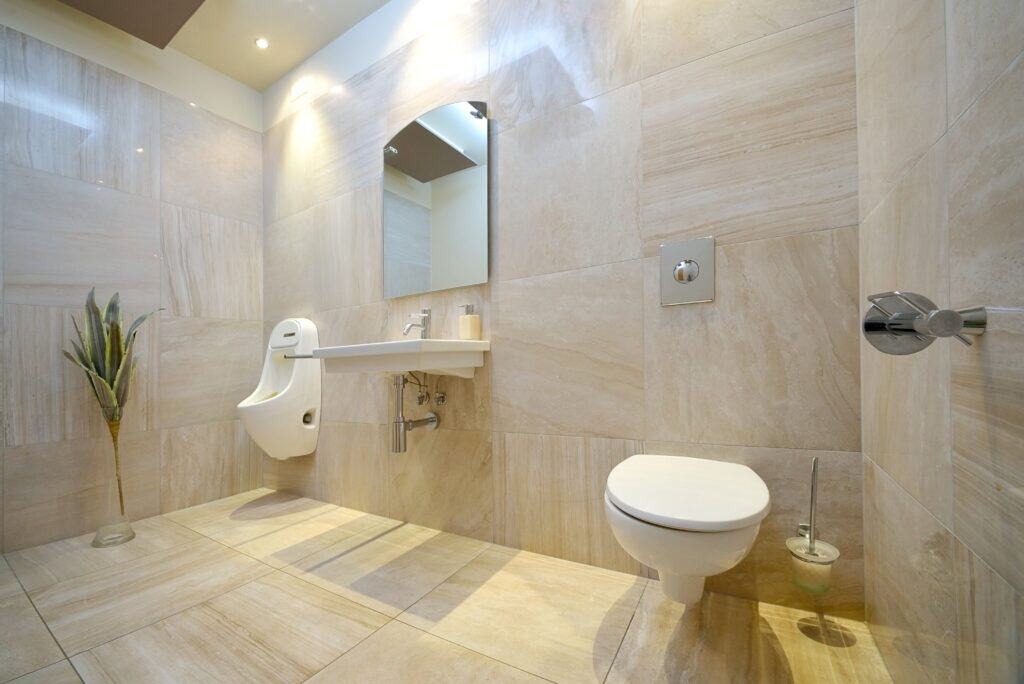
- Updated on:
ADA compliance for residential bathrooms means designing a bathroom that people with disabilities can use safely and independently, based on standards from the Americans with Disabilities Act (ADA) and California’s stricter Title 24 Building Code. While these requirements often come up in commercial projects, some residential properties in California also fall under their scope.
If you’re remodeling, adding an ADU, or managing multi-unit housing, understanding when and how these rules apply can help you avoid costly missteps and create a bathroom that’s safe, future-ready, and legally compliant. This guide walks through what the law says, how it’s applied in real-life scenarios, and what smart homeowners can do to stay ahead.
When and Why ADA Requirements Apply to California Residential Bathrooms
Understanding the Scope of ADA and Title 24 for Residential Bathrooms
Not all bathrooms are treated equally under accessibility laws. In private homes, the federal ADA doesn’t usually apply unless the property is federally funded or serves the public in some way. But in California, Title 24 of the Building Code widens the net considerably. Here’s where it kicks in:
Apartment complexes and multi-unit dwellings (ADA Compliance Audits for Apartment Complexes in California)
ADUs that will be rented or used by tenants
Publicly funded housing projects or homes receiving subsidies
Licensed care facilities and homes used for group living
So even if ADA doesn’t apply, Title 24 often does, especially if you’re remodeling or adding units.
When Do Residential Bathrooms Require Accessibility Features?
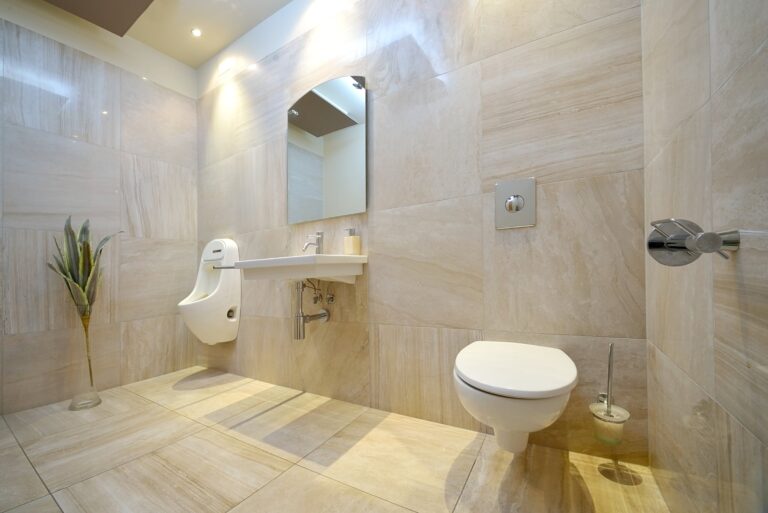
The rules tighten up when bathrooms are part of a broader construction or use case. Here’s when you need to pay attention:
Built as part of new public housing or multi-unit residences
Renovated in rental properties with permits pulled
Included in subsidized development using state or federal dollars
For homeowners, the key triggers are:
Permit-based remodels
Conversion of space that affects usability
Funding assistance that brings government codes into play
The California Building Code, especially Chapters 11A and 11B, lays out the exact circumstances where compliance becomes mandatory.
Key ADA and California Title 24 Requirements for Residential Bathrooms
What Counts as a Compliant Residential Bathroom?
Let’s break down what it actually means for a residential bathroom to meet ADA and California Title 24 standards. This isn’t just about passing inspection—it’s about making the space safe, usable, and future-ready for people of all mobility levels.
Here are the core accessibility features typically required:
Toilet placement and clearances: The center of the toilet should be 18 inches from the adjacent wall, with enough surrounding space for a wheelchair to approach and maneuver.
Grab bars: Properly placed behind and beside the toilet. The height, diameter, and length all matter—and incorrect sizing is one of the most common inspection failures.
Doorways: A clear width of at least 32 inches is required to accommodate most mobility devices.
Showers: Must be either roll-in or transfer-style, with an integrated seat, sturdy grab bars, and easily reachable controls. ADA Pool and Spa Barrier Removal Consulting Services can be helpful when reviewing fixture placement standards.
Sinks and countertops: These must allow adequate knee clearance, with hot water pipes properly insulated to prevent burns.
These aren’t just checkboxes they directly affect how safely and independently someone can use the space. Designing with these elements in mind improves usability for all, not just those with visible disabilities.
Common Design and Construction Errors in Residential Bathroom Accessibility
Even well-meaning renovations can fall short of what’s actually required. Before listing the most common problems, keep in mind that even one misstep—like a misplaced grab bar—can make the entire bathroom non-compliant.
Here’s what commonly shows up during CASp inspections:
Grab bars placed too high or too short, making them difficult to use
No proper turning radius for wheelchairs, limiting accessibility
Vanities with no clearance underneath, blocking legroom for seated users
Exposed hot water pipes under sinks, posing a burn risk
Slippery floor finishes without proper friction or texture
These issues may seem minor, but they create real barriers for people with disabilities and can trigger costly corrections.
ADA vs. FHA vs. CBC: How They Affect Residential Bathrooms
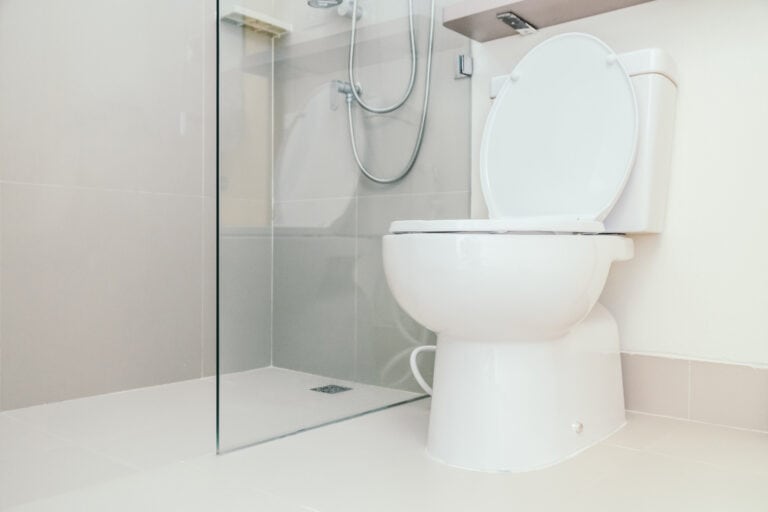
ADA vs. California Building Code (CBC) for Residential Settings
While ADA sets federal minimums, California’s CBC goes further in residential contexts:
May require vertical grab bars not mentioned in ADA
Has tighter turning radius standards
Applies to more categories, including ADUs and senior housing
Meeting CBC standards ensures your bathroom passes inspection and truly meets user needs.
ADA vs. Fair Housing Act (FHA) in Residential Design
The Fair Housing Act (FHA) covers most residential buildings with four or more units. It leans toward adaptability rather than strict ADA-style compliance.
FHA’s seven design guidelines include:
An accessible route into and through the unit
Reachable switches and controls
Reinforced walls for grab bars that may be added later
Knowing the distinctions between these codes helps guide smarter design decisions.
When Is an ADA-Compliant Residential Bathroom Legally Required in California?
New Residential Construction Projects
In newly built public or subsidized housing, accessibility is required. That means:
Following CBC Chapter 11B
Using layouts that provide full accessibility
Selecting fixtures and hardware that meet reach, height, and clearance standards
Residential Bathroom Remodels and Renovations
Compliance may be required when:
A permit is filed
The remodel exceeds cost thresholds
The new layout affects usability or access
Landlords should also be aware of the “readily achievable barrier removal” standard, which requires accessibility upgrades when reasonable. For additional planning help, see CASp Compliance Consulting for Commercial Buildings.
Rental and Leasing of Residential Properties
When renting:
ADUs
Converted spaces like garages or basements
You may need to install accessible bathrooms or provide accommodations. Tenants can also request accessibility upgrades under FHA and ADA. If your property serves short-term guests, review Hotel and Motel Accessibility Compliance Consulting.
Residential Bathroom Design Tips for ADA Compliance
Practical Upgrades for Safer, Compliant Homes
You don’t always need a full gut renovation. Here are some impactful upgrades that boost safety and ADA alignment:
Walk-in or roll-in showers with slip-resistant floors
Lever handles and motion-sensor lighting
Adjustable showerheads and reachable controls
These options improve function for everyone—not just individuals with disabilities.
Choosing the Right Residential Bathroom Layout
Layout affects how usable your bathroom really is. Focus on:
A 5-foot turning radius for wheelchair users
At least 30″ x 48″ clear space in front of key fixtures
Avoiding obstructions under sinks, and insulating pipes
Even small layout tweaks can make or break compliance.
Aging in Place Considerations for Residential Bathrooms
Consider a sink mounted at a height that accommodates both standing users and those who may need to sit, such as wheelchair users.
The ideal sink configuration balances accessibility with practicality, ensuring that all family members can comfortably use the space.
When planning sink height and clearance, it’s important to think about the diverse needs of your household, both current and future. This might include elderly family members or individuals with varying abilities.
The goal is to create a versatile space that can adapt to changing requirements over time, without sacrificing style or functionality.
Who Can Certify Residential Bathroom ADA Compliance in California?
Role of a CASp Inspector for Homes
A Certified Access Specialist (CASp) can assess whether your bathroom meets legal standards. They:
Understand California and federal accessibility codes
Perform detailed on-site inspections
Issue reports that can be used in legal disputes
This gives homeowners peace of mind and legal protection.
DIY ADA Checklists: Residential Use Limitations
Many homeowners begin their accessibility journey with online checklists. It feels like a manageable place to start—especially during early planning phases. But relying solely on these lists can create a false sense of security.
Here’s why checklists often fall short:
They may be outdated or too general to meet California-specific standards
They typically don’t account for Title 24 or nuanced CBC requirements
They offer no legal standing in the event of a dispute or inspection
Checklists can be a decent first pass for identifying obvious gaps, like missing grab bars or narrow doors. But when it comes to verifying true compliance especially for legal protection or funding nothing replaces a proper inspection from a Certified Access Specialist (CASp).
Consequences of Non-Compliant Residential Bathrooms
Legal and Financial Risks for California Homeowners
Missing ADA or CBC compliance can lead to:
Civil lawsuits or Unruh Civil Rights Act penalties
Permit denials, rejections, or costly construction delays
Ineligibility for grants, funding, or state programs
For public-facing units, the risk is even greater. Explore examples from School Building Accessibility Reviews and CASp Inspections.
Property Value Impact of Inaccessible Bathrooms
Non-compliant bathrooms hurt resale and rental appeal:
Fewer tenants or buyers will consider your property
Retrofits later cost more than building access from the start
You might lose out on tax credits tied to accessibility
Next Steps for California Homeowners
When Should You Get a Residential Bathroom Accessibility Audit?
Consider scheduling one:
Before remodeling a bathroom
Before converting a space to a rental
Before applying for public funding
Quick Recap for Residential Homeowners
Let’s sum it all up quickly for busy homeowners.
Even if federal ADA rules don’t apply to your home, California’s Title 24 usually does
Accessibility becomes legally required when you remodel, rent, or receive public funds
Bathrooms are among the most common problem areas during inspections, often because they combine multiple accessibility elements in one tight space. Issues like narrow doorways, poor turning clearance, or misaligned grab bars are frequently flagged, even in otherwise well-intentioned renovations.
A CASp inspection is the smartest way to confirm compliance and avoid costly issues
Your Residential Bathroom ADA Questions, Answered
Let’s wrap up by answering some of the most common questions California homeowners have about ADA compliance in residential bathrooms. Whether you’re planning a remodel or just thinking ahead, these quick answers can help clear up confusion.
Is ADA required in all home bathrooms?
No, not in every case. ADA usually doesn’t apply to privately owned homes unless they’re used for public purposes or receive federal or state funding. But California’s Title 24 might kick in during rentals, remodels, or state-assisted construction.
What if I’m just doing a small remodel?
It depends. If your project involves a permit or changes how the space functions—for example, turning a guest bathroom into the main one used by a tenant—Title 24 accessibility rules may apply.
How do I get help designing a compliant bathroom?
The safest move is to work with a CASp inspector or a contractor who understands California’s accessibility standards. They can spot issues before they become expensive corrections and ensure your design meets both state and federal expectations.
Will ADA upgrades increase my home value?
Yes, especially in areas with a growing senior population or a high percentage of rentals. Accessible bathrooms are a selling point for long-term livability and can broaden your pool of potential buyers or tenants.
What’s the best time to schedule an inspection?
Ideally, before you start construction or file for permits. That way, any compliance issues can be corrected on paper before turning into real-world problems—saving you time, money, and potential legal headaches.
Prioritizing Accessibility in Residential Bathrooms
Making your bathroom accessible isn’t just a legal checkbox. It’s a long-term investment in safety, comfort, and value. With California’s complex building codes, it’s smart to get expert guidance before you start knocking down walls.
If you want to future-proof your home or rental, a CASp inspection is the best place to begin.
Learn more about CASp inspections and how they support smarter, more compliant bathroom design in California
Make Your Home Accessible: Understand ADA Requirements for Residential Bathrooms!
Ensure your bathroom meets ADA accessibility standards by educating yourself, assessing your space, and making necessary updates for a welcoming environment.
PRO TIP!
Ensure your ADA-compliant bathroom has doorways at least 32 inches wide, a 60-inch turning radius for wheelchairs, and sturdy grab bars that support at least 250 pounds.

Emily Johnson
Certified Access Specialist (CASp) Inspector
Make Your Home Accessible: Review ADA Requirements for Your Bathroom Today!
Will an accessible bathroom design look institutional?
Not at all. Modern ADA-compliant bathroom designs can be stylish and aesthetically pleasing while maintaining functionality. Many manufacturers offer attractive fixtures and accessories that meet accessibility standards. Unlike public restrooms, home bathrooms can be customized to blend accessibility with personal style preferences while still adhering to bathroom guidelines for accessibility.

Written by Emily Johnson
Emily Johnson is a Certified Access Specialist (CASp) Inspector and is passionate about making spaces accessible for all. With over 10 years of experience and degrees in Civil Engineering and Architecture, she inspires others while championing ADA awareness.
RECENT POSTS
CATEGORIES
Get a free quote today!
By clicking “Submit”, you are signing up to receiving emails from us. You can unsubscribe whenever you like. SMS rates may apply.
Want To Know More About ADA Accessibility And How To Get Compliant?
Check out our blog!

